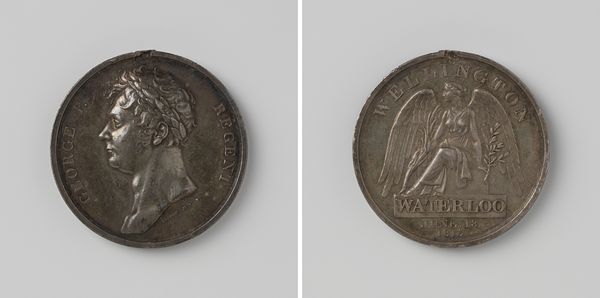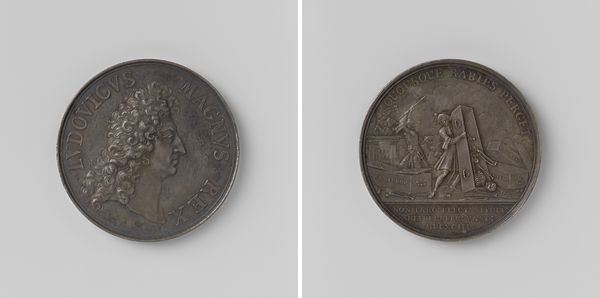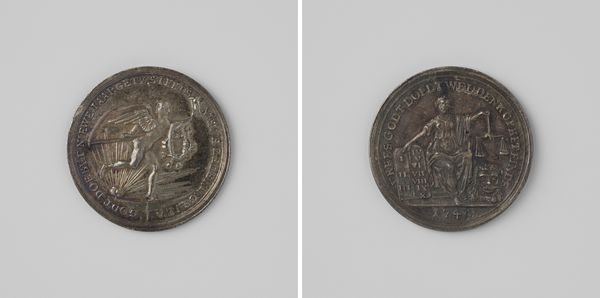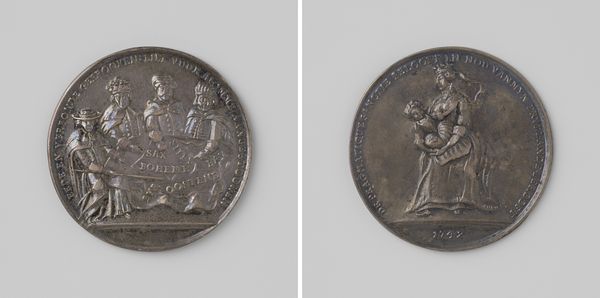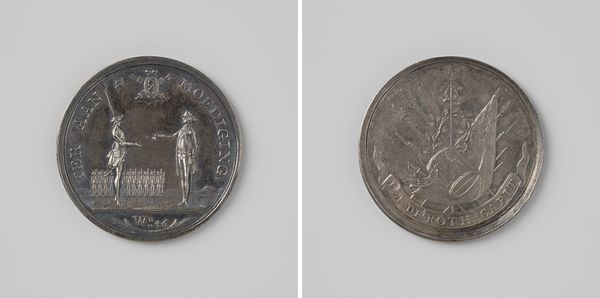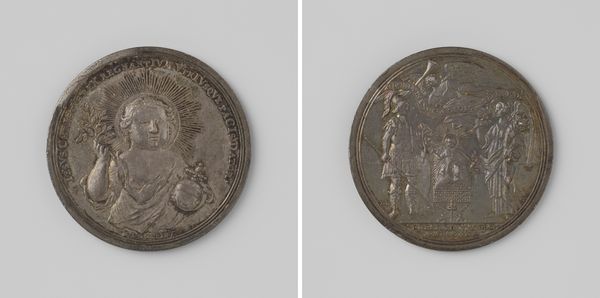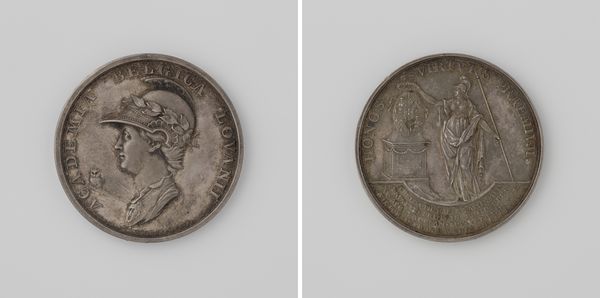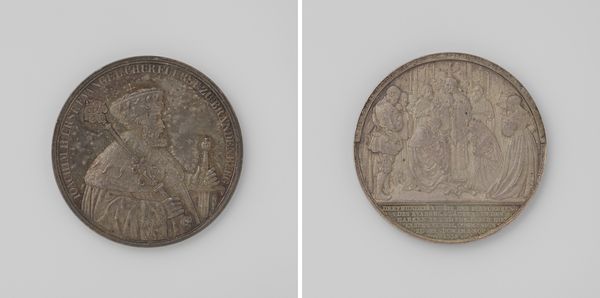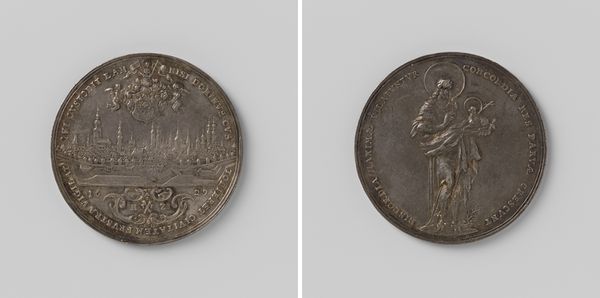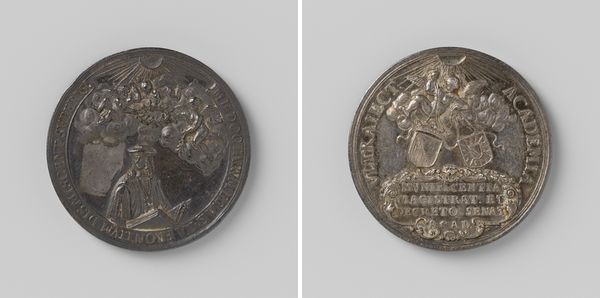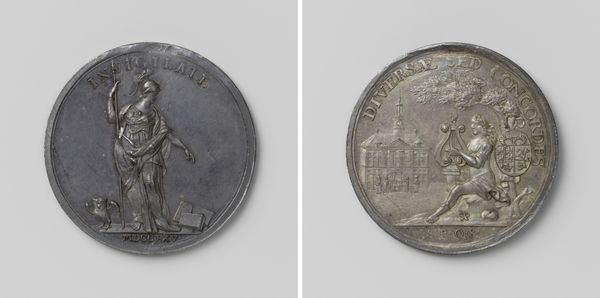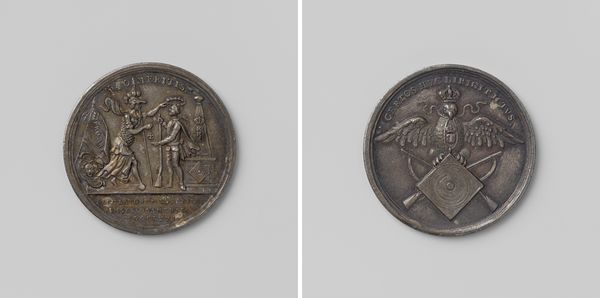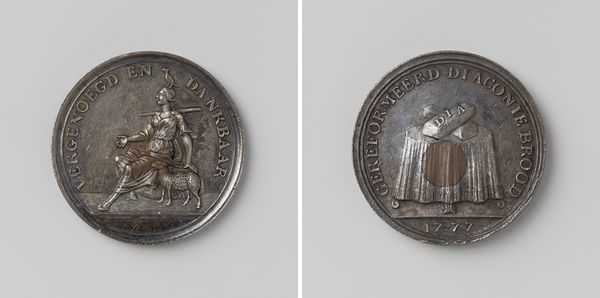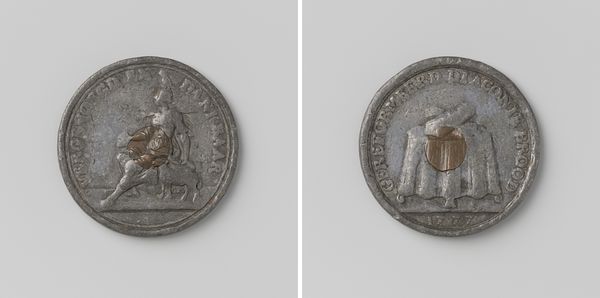
Dimensions: diameter 3.4 cm, weight 12.86 gr
Copyright: Rijks Museum: Open Domain
Editor: This is "Ridderlijke Confrerie van de Handbussche te Delft," made in 1792 by Johan George Holtzhey. It's a print on metal, and seeing both sides displayed like this, I'm struck by the contrast. One side feels very grounded with the seated figure, the other, more ethereal with the winged figure. What’s your read on it? Curator: It's fascinating how a medal, an object intended for commemoration and reward, can encapsulate the socio-political anxieties of its time. The imagery, rife with allegorical figures and symbols, speaks volumes about the societal values and power structures at play in Delft during the late 18th century. Notice the classical references - What could they represent in the context of a shooting confraternity? Editor: Hmm, I’m guessing a connection to civic virtue and defending the Republic? Like, drawing a parallel to Roman ideals of citizenship and military service? Curator: Precisely. These shooting confraternities were about more than just marksmanship; they were integral to the civic identity and, indeed, defense. Holtzhey’s work reveals the conscious effort to link local pride with grand historical narratives. The medal wasn't merely decorative; it was an assertion of identity. Consider how the depiction of weaponry shifts from a practical tool to a symbol of civic responsibility. Editor: So the medal is communicating power. Not just celebrating the skills, but the group's importance in society at large. The political imagery embedded in something intended for a shooting match feels kind of surprising. Curator: Exactly! And think about who would have received and worn this medal. Its distribution cemented this group’s position, visually and materially reinforcing the power dynamics within Delft’s society. It gives us insight into who held power, and how they chose to display it. Editor: I see it so differently now. It's much more than just a decorative object, it's a snapshot of social and political currents of the time. Thanks! Curator: My pleasure! It’s always rewarding to uncover the layers of history embedded within art.
Comments
No comments
Be the first to comment and join the conversation on the ultimate creative platform.
